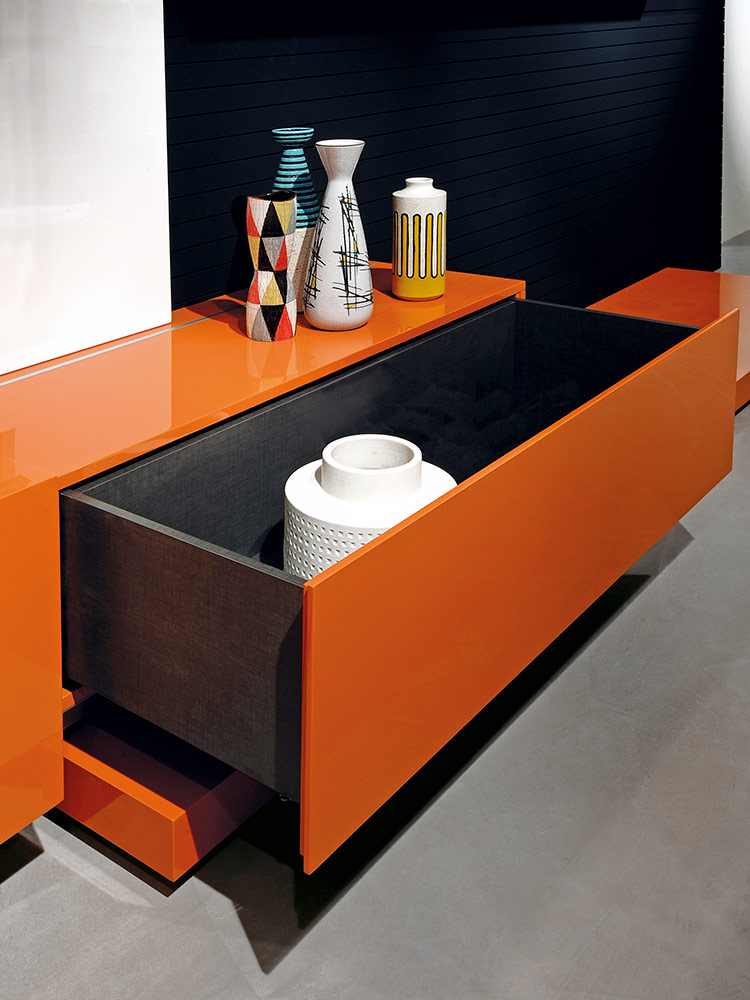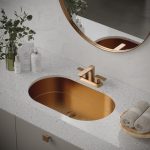The main difference between Salice Futura and Salice Progressa lies in performance and precision. Futura is Salice’s long-proven undermount drawer slide system known for reliability and smooth motion, while Progressa represents the next generation—offering enhanced stability, tighter tolerances, and soft-close technology that feels noticeably more refined.
If you’re upgrading cabinetry or specifying slides for a new project, both systems are excellent—but they serve slightly different needs.

At a Glance: Salice Futura vs Progressa
- The Futura is a proven, value-engineered option with solid load ratings and smooth motion.
- The Progressa is a next-generation, premium slide system with enhanced stability, synchronization and refinement—thanks in large part to its built-in rack-and-pinion mechanism.
- If you’re outfitting standard cabinets or high-volume production, Futura may suffice. If you’re building high-end custom kitchens, heavy-duty boxes or want “luxury feel,” Progressa earns the specification.
1. Overview of Salice Futura
The Futura series is Salice’s reliable concealed undermount runner designed for a wide range of cabinet applications.
Key features:
- Full extension to give unobstructed drawer access.
- Static load capacity ~ 100 lb and dynamic ~ 75 lb in typical models.
- Optional soft-close (Smove) or push-to-open versions are available.
- Adjustable front clip system for height, side and depth adjustment.
- Compatible with both face-frame and frameless cabinet construction.
From a cabinet-maker’s or shop owner’s standpoint, Futura offers dependable motion, a broad installation base, easier quoting and less risk—particularly when many drawers are being produced. It lets you build good functionality at a moderate cost.

2. Overview of Salice Progressa
Moving up the performance ladder, the Progressa series brings enhanced engineering aimed at high-end cabinetry where even drawer motion, quiet closing and lateral stability matter.
Key features:
- Full extension undermount slide with synchronized runner action.
- Static load ratings from ~120 lb up to ~170 lb in the “+” versions.
- The proprietary “S-Drive” progressive module and integrated rack-and-pinion mechanism ensure both slides act as one synchronized unit.
- Built for large, wide drawers, push-to-open systems, and premium installations where drawer sag, racking or uneven closing are unacceptable.
- 6-way adjustable mounting clips (height, side, depth, tilt) facilitate precise alignment and finish.
In short: if your drawings indicate wide drawers, heavy loads, or you’re targeting luxury finish where the slide motion itself becomes part of the user experience — Progressa delivers a noticeable upgrade.

3. Deep Dive: Rack-and-Pinion Synchronization in Progressa
One of the defining differentiators between Progressa and the more standard Futura is the integrated rack-and-pinion (gear) mechanism that links both sides of the undermount slide. Here’s what that system means in practical terms:
What it is:
- In the Progressa runner set, both left and right slides are mechanically linked via a rack and pinion gear train. This means the slides move in perfect sync regardless of how the drawer front is pushed or pulled.
- Salice describes this as “the rack and pinion guarantees impeccable synchronization, silent movement and optimal stability for a seamless user experience.”
Why it matters:
- Lateral stability: Wider drawers often suffer from racking (twist) or one side closing ahead of the other. The rack-and-pinion ensures both sides share load and motion equally, reducing wobble or uneven closing.
- Silent, smooth motion: Because the mechanism keeps the runners in lock-step, the motion is more consistent, less prone to binding, and yields a quieter feel.
- Push-to-open and wide drawer robustness: Especially for push-to-open versions or drawers wider than ~30 in (762 mm), the synchronization is critical. Salice notes push-to-open functionality “works with any drawer width; its functionality is at its best with drawers wider than 762 mm (30”).”
Installation/performance implications:
- Because the slides act as a linked system, you get better behavior under load and lesser need for external stabilizer bars or added hardware in many applications.
- Adjustments become more critical: misalignment on one side can affect behavior of both. However the 6-way clip system helps fine-tune height, side and depth to maintain synchronicity.
- While the added synchronization mechanism adds cost, it also reduces the margin for undesirable motion in premium installations — a preference for designers, custom shops and high-end spec jobs.
For cabinet-shop operators and specification writers, the rack-and-pinion system is the engineering detail that elevates Progressa from “very good” to “premium and robust for complex or large drawer boxes.”

4. Installation & Adjustment Comparison
Both Futura and Progressa are undermount, full-extension systems designed for face-frame or frameless cabinetry, and both have adjustable mounting clips. But the differences in tuning and performance are worth noting.
Salice Futura:
- Standard adjustment clips provide side, height and depth correction; tool-free height often ~+2.5 mm, depth ~±3 mm in some models.
- Load rating (~75 lb dynamic / 100 lb static) makes it appropriate for typical drawer boxes with moderate loads.
- Installation is faster, fewer components, suitable for high-volume production where speed and reliability matter.
Salice Progressa:
- More advanced adjustment options: 6-way locking devices plus optional tilt adjustment give a high degree of precision.
- The synchronization system means both sides must be well aligned — misalignment affects performance more than in a standard slide.
- Because of higher load rating and wider drawer capability, Progressa may demand heavier gauge material, precise installation, and a slightly higher upfront cost—but that cost is offset by lesser service issues, better user experience and specification appeal.
5. Performance & Use-Case Comparison
| Feature | Salice Futura | Salice Progressa |
|---|---|---|
| Load rating (typical) | ~75 lb dynamic / 100 lb static. | Static up to ~120 lb and in “+” versions ~170 lb. |
| Extension | Full extension | Full extension |
| Soft-close / push options | Yes (Smove soft-close, push-to-open) | Yes, plus sophisticated push-to-open wide drawer options. |
| Synchronization / motion system | No mechanical rack-and-pinion linking | Yes: integrated rack-and-pinion “S-Drive” linking both runners. |
| Best for | Standard kitchens, bath vanities, office cabinetry where cost and reliability matter | Premium custom cabinets, wide/heavy drawers, handle-less/ push openings, designer specifications |
| Use-case decision tip | Choose when budget or production speed is primary consideration and drawer loads are moderate | Choose when user experience, drawer size/load, or specification level demands top motion and stability |
6. Which Should You Choose?
If you are a production cabinet shop or builder working within tight cost and time budgets, and your drawer boxes are typical size/weight, the Salice Futura remains a smart choice. You get full-extension, undermount mounting, soft-close options, good performance, and broad availability.
On the other hand, if you’re working on a high-end kitchen, millwork specification, premium drawer layout (wide, heavy, handle-less, push-to-open) or you want a differentiator for your cabinetry business—then the Salice Progressa stands out. The rack-and-pinion synchronization gives you better lateral stability, more refined motion and a polished user experience.

7. Final Thoughts
Both Salice systems carry the brand’s strong reputation for precision engineering and Italian manufacture. The Futura delivers excellent value and dependable performance for typical cabinetry scenarios. The Progressa pushes the envelope: higher load capacity, synchronization via rack-and-pinion, refined motion, and specification-grade appeal.
For cabinetmakers, specifying Futura might mean easier quoting, less training and faster throughput. Specifying Progressa might mean higher margin, premium finish and fewer callbacks in custom applications.

